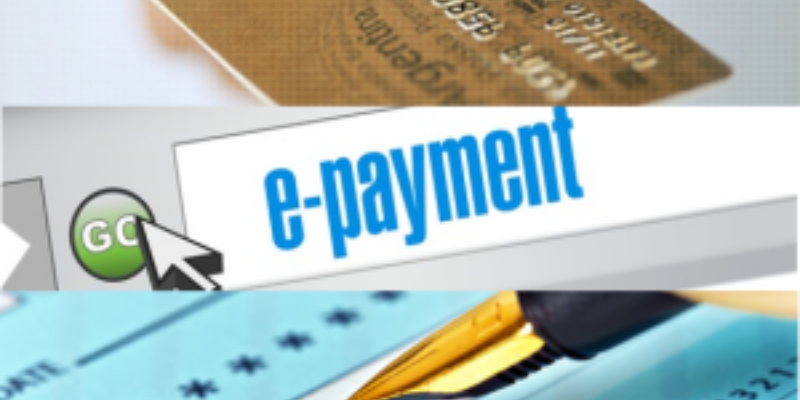Contact Sales (402) 933-4864
Contact Sales (402) 933-4864
Written by: Michael Thompson
Remote deposit capture (RDC) of checks has many benefits—not least, reducing the manual labor required for processing, and ultimately posting checks into the appropriate back-office systems. That, in turn, can save you money. When you automate check processing using RDC, it’ll cost you between 10 and 20 cents per transaction (depending on monthly volumes)—significantly less than the $1 to $2 (or more) per transaction that traditional outsourced lockbox processing can cost.
Think of it this way: with traditional, manual check processing, you’re paying someone to open the mail, write deposit slips, endorse checks, and run them to the bank. RDC takes care of all of that for you—and makes it easy to automatically post remittance data into your back-office accounting/ERP/CRM system(s). Every time someone has to take a look at a payment in process, it costs you money. With scanners dropping in price (a good multi-feed scanner can now be purchased for $500 or less in many cases), you can speed remittance, reduce costs, and eliminate manual reconciliation for most check-based transactions within your accounts receivables (AR) operations.
RDC also helps you minimize the inherent risk in manual processing. Human error can result in a lot of problems: transposed numbers, missing checks or invoices, errors in math, and much more. Checks are also still one of the most prevalent sources of fraud. Leading RDC solutions, include magnetic ink character recognition (MICR), which can help you safeguard against that. The numbers on checks—including account numbers, bank codes, and check number—are printed with magnetic ink. MICR scans the information for possible fraud, alerting you to counterfeit checks. Advanced platforms can also set transactional thresholds and trigger alerts and notifications to specific users to help combat the risk associated with potentially fraudulent transactions.
We’ve touched on this topic before, but as more companies look to achieve straight-through processing, they run into issues and, invariably slowdowns, when they receive checks without any corresponding remittance advice or turn-around documents. When this happens, it slows the process down as accounts receivable associates have to look up the client (hopefully, whose name is on the check) to manually record and apply the payment. This becomes even more frustrating in industries where monthly recurring payments come from customers who many times opt not to return any remittance advice with their payment.
So is there a way to attack this issue and try to get these incoming check-based payments into a more streamlined process? The answer, of course, is YES—with the help of a truly integrated receivables (IR) platform. As a matter of fact, there are several ways the process can be sped up, while helping to lower stress levels in your AR department.
Step #1 – Leverage Invoice Presentment within Your IR Platform
With a truly integrated IR platform, invoice data can be imported so it resides directly within the system for ready association with scanned check transactions. When checks are received without any remittance documentation, your AR associate can just click a button to locate all outstanding invoices for that customer and apply it to the one (or multiple invoices) that matches. While this is still technically a manual task, not having to search a second accounting platform considerably speeds up the process. When this is combined with MICR-line, and intelligent invoice matching (discussed next) it gets even more powerful.
Step #2 – MICR-line & Intelligent Invoice Matching
In short, MICR-line matching is a two-step process. First, MICR-line matching refers to scanning the MICR-line data of the check (ABA number and bank account number) and having the IR system remember this payment data for future use. Second, that MICR-line data is then associated with a client account number, donor number, etc. that is used by the accounting or CRM system. After the data is associated the first time the check is received from your customer (or donor), the system can automatically remember who sent the check and what account the funds should be applied to.
If you’re using invoice presentment (Option A) along with MICR-line matching, then an advanced IR platform can automatically apply it to a specific outstanding invoice or invoices. If there are multiple invoices outstanding, intelligent invoice matching rules can be put in place to match the check amount to a particular invoice or invoices, apply it to the oldest invoice first, or other customized rules. This not only allows faster processing, but minimizes touchpoints in the AR area and also accelerates exception handling.
Step #3 – Add Recurring ACH & Credit Card Processing for Additional Efficiencies
If you are lucky enough to have the opportunity to leverage a truly integrated IR platform, you’ll benefit from the ability to not only process checks, but also initiate ACH and credit card payments on a single platform. Leading IR platforms deliver options to make the move to recurring ACH payments much easier by utilizing the MICR-line data captured from customers who have paid with checks in the past (of course, you will want to obtain their approval to make the move to ACH payments prior to making the switch). This is especially powerful for industries where recurring payments are the same each month, but also can be used in industries where the recurring invoice amounts change on a monthly basis. How do we achieve this?
First, as stated above, in a true IR platform, the MICR-line data can be scanned and then stored for future use. However, instead of just using that MICR-line data to apply it to invoices, the MICR-line data can be used to setup and send an ACH payment for the outstanding amounts. As mentioned previously, customer permission would be needed to take this step, but we’re seeing more and more clients putting in the effort to move their customers to automatically recurring electronic payments in addition to self-service online and mobile payment channels.
In closing, there are many ways a truly integrated receivables platform can assist companies in streamlining their AR operations to help achieve straight-through processing. This post highlighted just one example of how you can start slow and then expand as needed to eventually have all payments processed and posted with minimal AR touchpoints. This not only lowers operational costs, but also allows AR associates to use their time for other, higher-value FP&A efforts.
If you’d like to learn more about any of these topics, or what else a true IR platform can assist with, we’d welcome the opportunity to speak with you.
Originially published November 16, 2017.

Part 1 of the 3-part True Straight Through Blog Series Here at FTNI, we’ve been in a lot of...
Read More
If you’re an insurance company, your customers probably want to do everything online, from making...
Read More
Each day brings new announcements and news from the ever-changing world of payment technology. With...
Read MoreFinancial Transmission Network, Inc.
13220 Birch Drive, Suite 120
Omaha, NE 68164
Sales: +1 (402) 933-4864